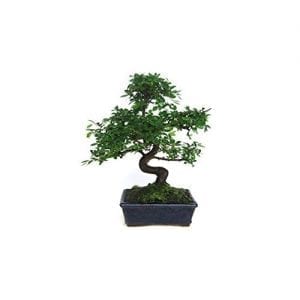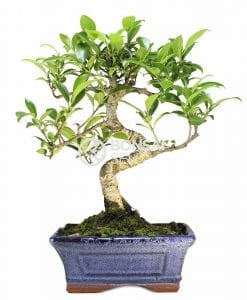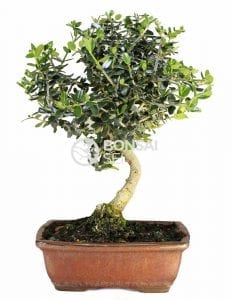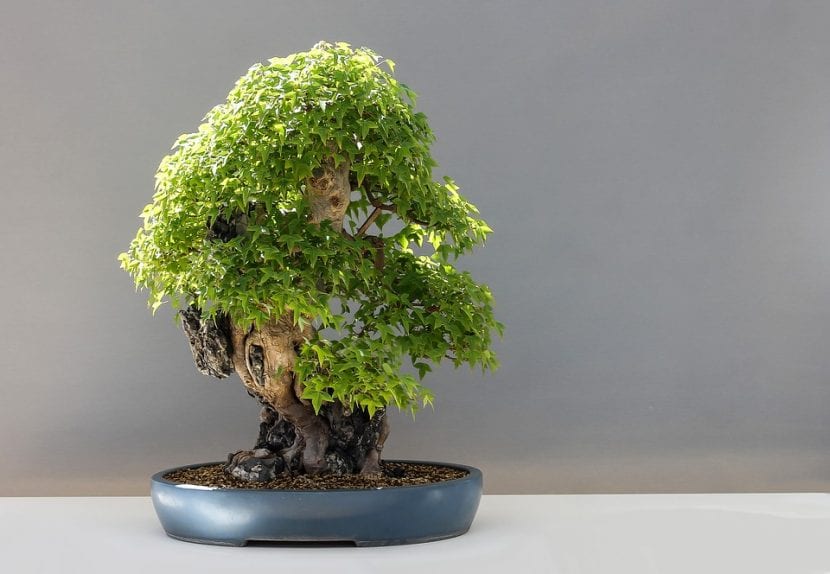
The bonsai. To speak of them is to enter a world in which, until relatively recently, remained accessible only to a lucky few from a couple of countries in East Asia. Some call them Art, others go against nature, but what no one can deny is that they are plants that attract a lot of attention, in one way or another.
Now knowing the origin and its history is easier than ever, and do you know the best? You will not have to leave the site to discover all (or many of them) the secrets of this practice.
What is a bonsai?
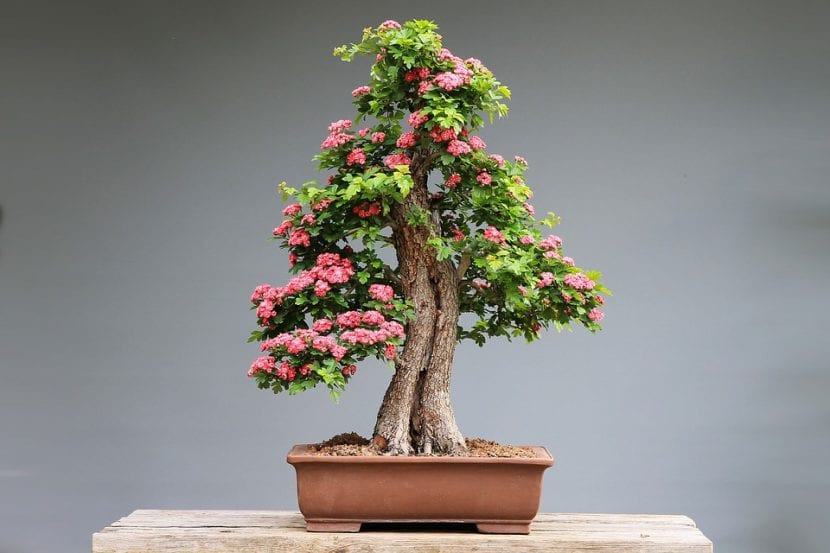
But so that there is no doubt, we are going to start by explaining the meaning of the word "bonsai". Currently the truth is that we quite confuse what is a real bonsai with what is a pre-bonsai or a bonsai project, since not all the plants that are grown in those trays that are often liked so much can be called that.
In fact, I myself have seen freshly rooted cuttings in some nurseries that, planted in trays, were sold with that label at prices that were almost equal to those of true 'miniature trees'. Taking into account what has been said, if we want to be completely sure of those in front of us, it is a penzai (as they would say in China), the aforementioned it must have these characteristics:
- Has a well defined style, that can resemble the shape and growth of a plant that lives in nature. Also, the profile of the plant is triangular.
- El trunk is thick, 2cm in diameter or more, and conical, being wider at the base than at the top.
- It has been working for years (at least 5, which is what is usually needed to give it a style).
- Branch and trunk development is natural; that is, it is not forced. We do not see, for example, a trunk that grew straight and then bends on itself sharply.
- The size, shape and color of the tray in which it is planted does not stand outI mean, it's pretty, but let the plant take center stage.
- Bonsai inspires tranquility. It is true that this is not always easily noticed, but if you end up liking this world, in time you will feel it 🙂.
And then what is NOT a bonsai?
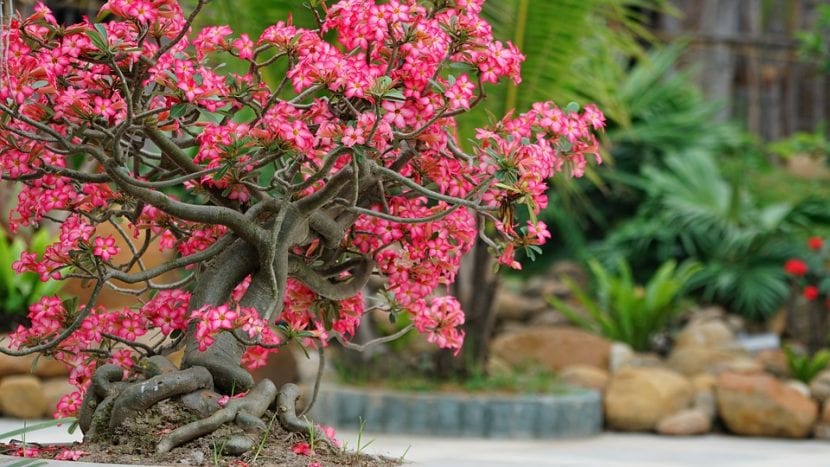
I'm going to confess something to you: it takes me a bit to answer that question. I'll tell you why: in recent times the standards that the first teachers established are no longer so… fixed. In addition, there are many plants that could pass as bonsai, or are even called that way. But, still and everything, we could say that it is NOT a bonsai ...:
- Freshly rooted cuttings
- Herbs, bulbous
- Palm trees and Cycas
- Caudex plants (such as the desert rose)
- Trees and shrubs with very thin trunks and little or no worked
- The calls "indoor bonsai»
What is the origin and history of this… Art?
We now turn to talk about the origin and history. And for this, we have to go back to a time, about two thousand years ago, where in China the nobles and people of high society began to work trees and shrubs in the area to ensure eternity, something they believed they would get if they donated them to the Taoist monks.
These plants were very special to the Chinese, not only because they represented a bridge between the divine and the human, but also because they imitated nature. Although it sounds a bit curious, they did not have to go far to be inspired, since high mountain plants do not grow as much as those that live at lower altitudes, since the climate conditions are not as favorable for growth or development. .
But, fortunately, the knowledge about bonsai did not stay in China. Some 800 years ago some of these trees were introduced to Japan, where they were interpreted from the Zen conception of "beauty of austere severity."
This made the trees work with the intention of representing a landscape, often accompanying them with suisekis (stones that by their shape and colors recall an object or something in nature), accent plants (small plants that "help" the bonsai to complete the landscape it represents), and / or kakemonos (a poster with paintings or calligraphies hanging from the wall, vertically).
How are they classified?
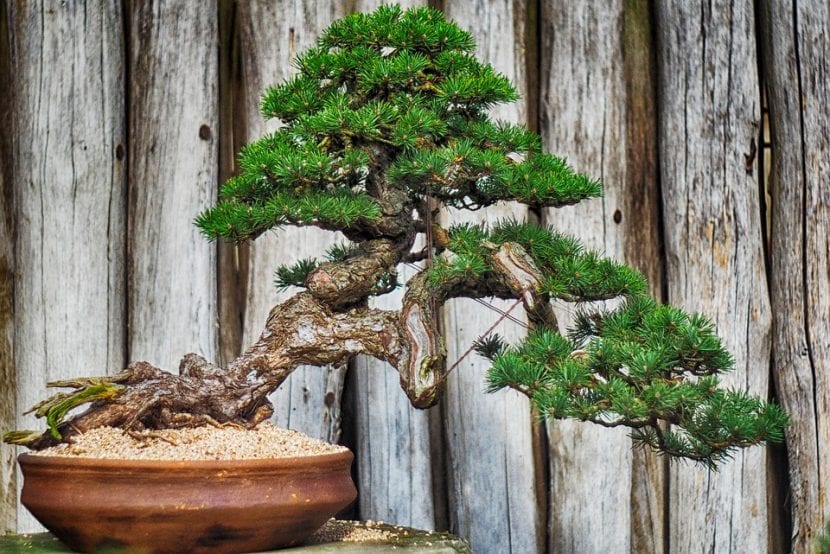
Bonsai are classified according to their size or style:
By size
- shito: they are those that measure less than 5cm.
- Mame: they measure between 5 and 15cm.
- shohin: they measure less than 25cm.
- Komono: they measure between 15 and 31cm.
- Lead: they measure between 30 and 60cm.
- omono: they measure between 60 and 120cm.
- Hachi-uye: they measure more than 130cm.
By style
There are a wide variety of styles, which are:
- chokkan: vertical, with a straight trunk and triangular silhouette.
- moyogic: informal vertical, with a sinuous trunk.
- shakan: the trunk is inclined no more than 45º.
- Kenya: or waterfall. The trunk turns on itself, so that its apex is under the edge of the pot.
- han kengai: half waterfall. The apex of the trunk is above the base of the pot.
- fukinagashi: or swept by the wind. All branches grow to the same side.
- Neagari: the roots are exposed, usually on a rock.
- Bunjin: o Literati, the trunk is slender, with an almost non-existent crown. It is of Chinese origin.
- sōkan: it is the same plant with two trunks, one of them being thicker and larger than the other.
- ikadabuki: it is the raft style, where several branches are born from the same trunk that is semi-buried.
- Yose-Ue: is the forest style. An odd number of specimens is planted (unless there are only two), which are worked following the rules of triangularity, both individually and in groups.
- Kabudachi: it is a multiple trunk, and it works as if it were a forest.
- hokidachi: is the broom style. The branches come out from the same point of the trunk, and are arranged in an upward fan.
- Sekijōju: one or more trees are planted on the hollows of a rock.
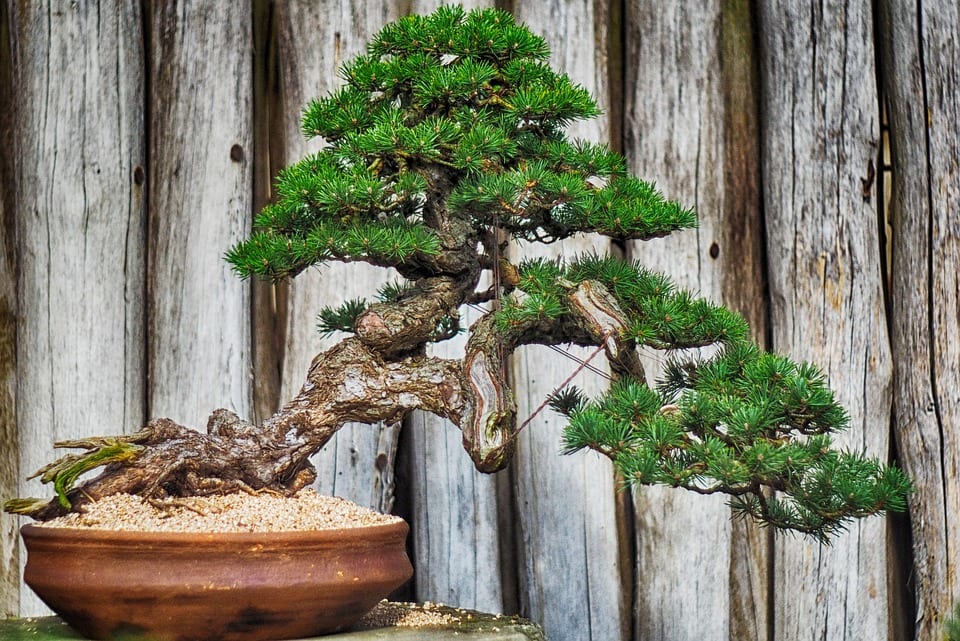
How is a bonsai grown?
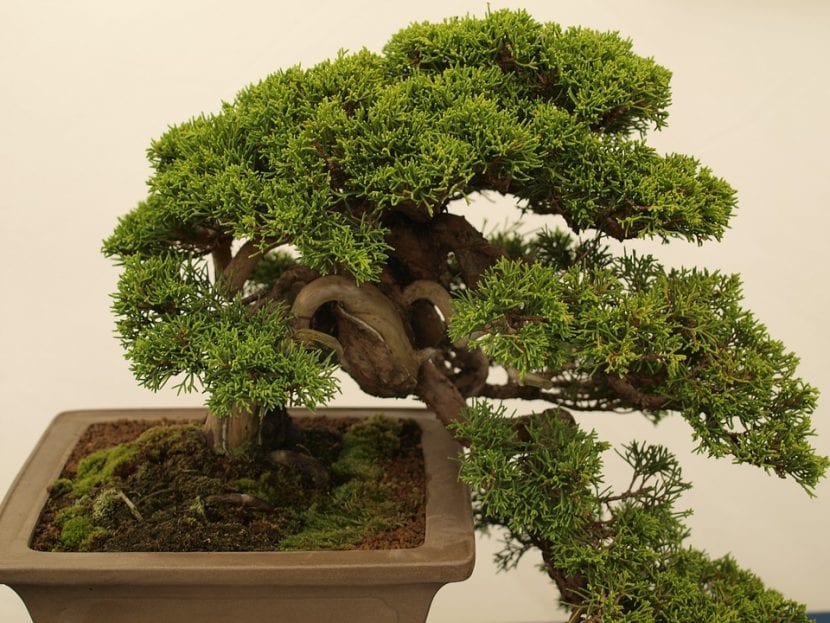
Growing a bonsai can be a magnificent experience, since, if we do it well, we will feel much calmer which will help us to have a better life. But yes, so that there are no problems or, if there are, they can be solved more or less well, it is very important to always have, always and always present (forgive me the repetitions, but it is the first thing that is usually forgotten) this:
Patience and respect
The first you need to perform the tasks you need at the right time. And the second because if you don't respect the tree or bush, if you don't respect its natural cycles, sooner or later you will run out of it, because no plant can do things as fast as humans.
Starting from that, then you can think about the care itself, which is:
- Location: whenever possible, it must be kept abroad. Although miniature, they are trees and shrubs and, in fact, if planted in the ground, they would grow to the height that, by genetics, corresponds to them.
Only tropical and subtropical species grown in cold climates require protection in winter, in a room away from heat sources. - Substratum: It depends a lot on the species you are growing. A very good standard mix is 70% akadama with 30% kiryuzuna, but if you have a Ficus, Ulmus or Zelkova, which are very hardy and adaptable, you can plant them in equal parts black peat with perlite. You have more information here.
- Irrigation: only when the surface of the earth begins to be very dry, every 1-3 days (sometimes more) in summer and every 3-4 days the rest of the year. Use a watering can with fine holes, or take a plastic bottle and poke a few holes in the cap.
If possible, irrigate with rainwater; and if not, with water without lime. - Subscriber: from spring to late summer, with specific bonsai fertilizers following the instructions specified on the package. You will find them in specialized stores, or here.
- Pruning: there are two types:
- Pinching: also known as maintenance pruning. It consists of gradually forming the bonsai, allowing 7-8 pairs of leaves to grow and cutting 2-3 pairs. Suckers must also be removed, unless they are to be used to create a forest.
- Formation pruning: it is one that is given so that it has the desired shape. It is recommended to do it little by little (in a matter of 2-3 years), since the energy that the plant uses to recover is enormous and, if it is a very drastic pruning, it may not exceed it.
Do not forget to disinfect the tools before and after use, and to seal the wounds with healing paste (you can get it here).
- Wiring: only if it is necessary. It is used to take the branches to where we want, with the help of specific bonsai wires. It is done between spring and autumn, making turns between which the same separation is left.
Check the wire from time to time to prevent it from sticking into the branch. - Transplant: every 2 or 3 years, depending on the species. If possible, the entire substrate is renewed, and the roots are trimmed a little (the volume must be 1/3 greater than the volume of the crown).
Where to buy bonsai?
If you want to buy a real bonsai, you I recommend going to a nursery or store specialized in its production. In "conventional" nurseries you will find many plants with that label, but which are really nothing more than bonsai projects, or not even that.
Although yes, it is not cheap. A tree or shrub that has its years of work behind it costs as little € 40, and can exceed € 2000.
But do not worry.
Small trees that sell cheaply are a great starting material. So if you are not planning to go to a nursery at the moment, here are some (by the way, ignore age, since even the experts do not agree on this issue):
| Species | Features | Price |
|---|---|---|
|
Zelkova parvifolia
|
Looking for a sturdy tree suitable for beginners? You won't find any like this. Withstands frost, drastic pruning, and diseases.
It is grown outdoors all year round, in full sun. |
35€ |
|
ficus retusa
|
A beautiful evergreen tree that will undoubtedly give you many joys, as it also resists weak frosts (down to -2ºC). If it is very cold in your area, you will need protection. |
24,90€ |
|
Olea europaea var. sylvestris
|
Wild olive is the ideal tree to grow in warm temperate climates. It is evergreen, and it resists heat without problems as long as it has water.
It is grown outdoors, unless there are significant frosts in winter. |
37,50€ |
And with this we are done. I hope you liked what you have learned about bonsai, and that you are encouraged to enter their world 🙂.
